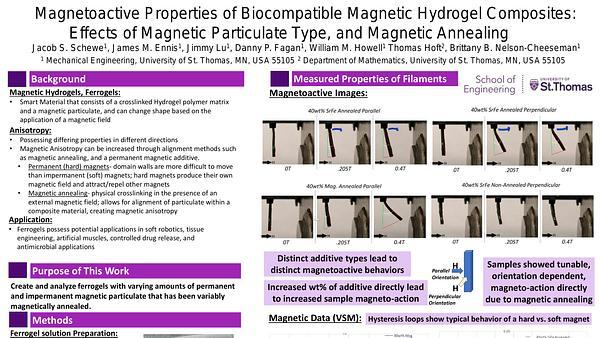Would you like to see your presentation here, made available to a global audience of researchers?
Add your own presentation or have us affordably record your next conference.
An effective vibration isolator (VI) strategy isolates payloads from vibration sources by introducing compliance. Passive isolators are low cost and easy to install but are
tuned to a specific vibration spectrum, and rapidly lose effectiveness if the design point shifts. In contrast, adaptive vibration isolators using magnetorheological fluids (MRFs) continuously
adapt to changing vibration spectra by adjusting a magnetic field using an appropriate control algorithm. Traditional fabrication methods using injection molding are economical only when
large numbers are produced, which precludes customizing VIs for a specific available jitter space, natural frequency, or static displacement. 3D printing is advantageous for a
magnetorheological vibration isolator (MRVI) because designs can be customized: the shape of the hydraulic rubber reservoir can be economically customized to meet the requirements of
a specific application by tuning such properties as axial stiffness, bulge stiffness, diameter, height, and Shore hardness of the membrane wall. The MRVI, which is a squeeze-mode device,
consists of a reservoir or rubber bellow with customizable stiffnesses, a plastic lid which houses an electromagnetic coil, and an MRF (Figure 1). The rubber bellow and plastic lid were
fabricated using a Masked Stereolithography (MSLA) 3D printer. The electromagnet was mounted onto the lid, the reservoir was filled with an MRF, and the lid was twisted onto the
reservoir using a large thread. Using a testing machine, the damper forces of the 3D-printed MRVI were measured under constant velocity conditions for different magnetic fields. From
these tests, the magnetic field-controllable performances such as the dissipated energy and the dynamic force range of the MRVI were obtained (Figure 2). The feasibility of the 3D-printed
MRVI was experimentally confirmed. In addition, using 3D printing, and by selecting Shore hardness of the material, wall thickness, bellow shape, and MRF Fe particle volume fraction, a
broad range of VI applications can be addressed with this design methodology.
References:
- S. Kaul, “Modeling and Analysis of Passive Vibration Isolation Systems,” Elsevier, 1st Ed., 2021, DOI: 10.1016/C2019-0-00013-1.
- M. Brigley, Y. T. Choi and N. M. Wereley, “Experimental and Theoretical Development of Multiple Fluid Mode Magnetorheological Isolators,” Journal of Guidance, Control, and
Dynamics, Vol. 31, No. 3, pp. 449-459, 2008, DOI: 10.2514/1.32969.

